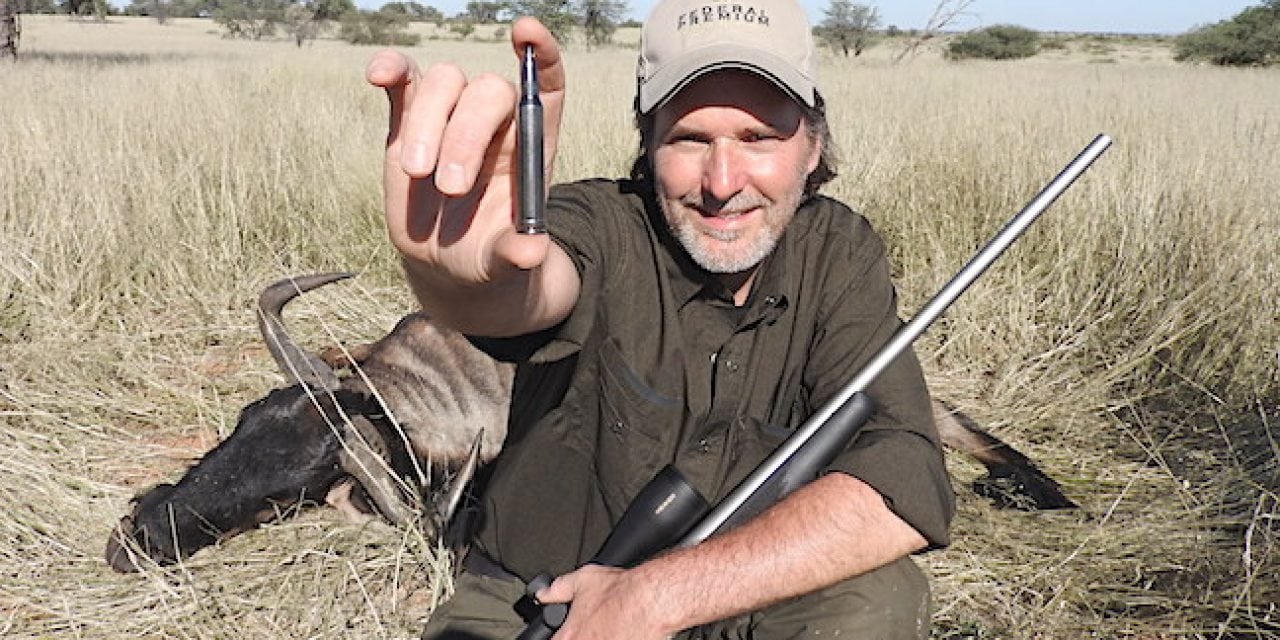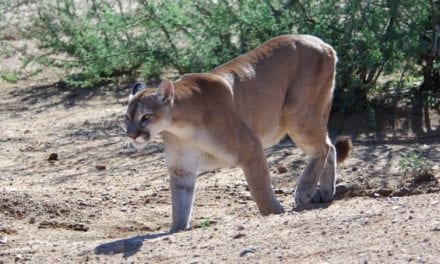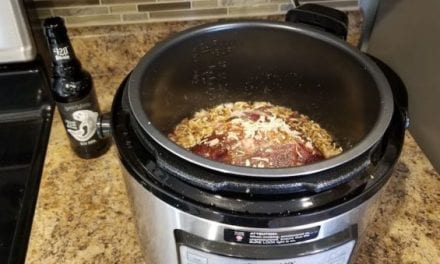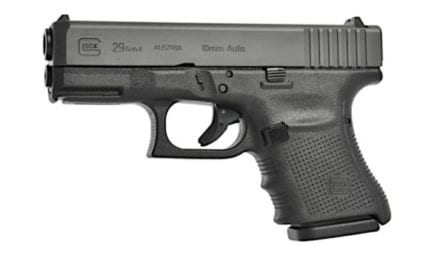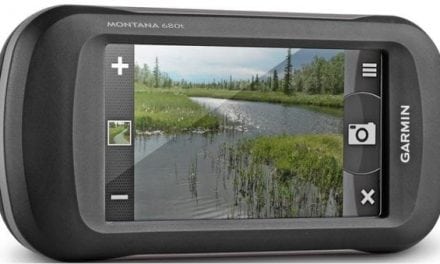We shot game at short and long distances to show what to look for in a modern hunting bullet.
Hunters need a bullet that expands quickly to expend as much energy as possible inside the animal. Many hunters like the idea of a pass-through so that there are two holes and more blood to track. And that can be a good thing.
But if the bullet does its job, there’s little reason to track.
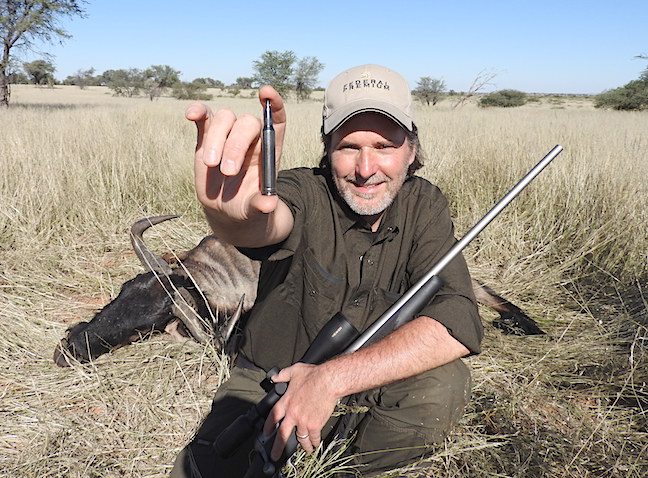
It’s dicey to depend on a new bullet on a hunt. But this one (Federal Premium Edge TLR) performed beautifully. (Photo by Ryan Bronson)
On a recent hunt in Africa, I shot many game animals with a similar bullet to see what kind of performance I would get. I tried the latest ammo on the market:
Federal Premium’s Edge TLR with a 200-grain bullet in .300 Win. Mag.
When my shot entered where I planned, I got excellent results from the bullet. Typical was an 80-yard shot at a quartering-away 400-pound blue wildebeest.
I’ll Take Mushrooms With My Wildebeest
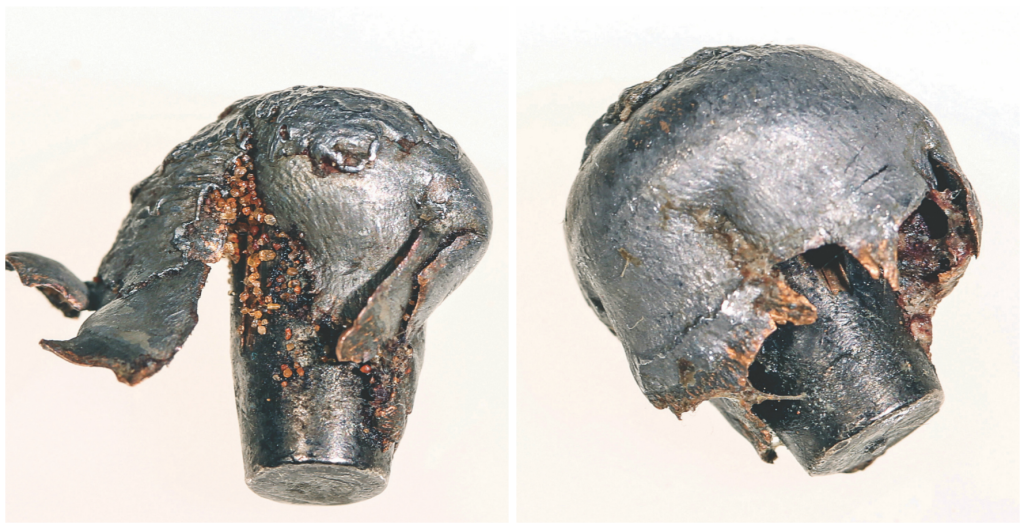
TIGHT-SHOT RESULT
- The 200-grain .300 Win. Mag. bullet (above left) expanded to twice its original size and retained 84 percent of its weight from 80 yards.
LONGER-RANGE RESULT
- The other .300 (above right) nearly tripled its diameter (.30 to .75 inch) and retained 89.5 percent of its weight from about 300 yards.
The 200-grain bullet from a .300 Win. Mag. entered behind the shoulder, ripped through both lungs, and came to rest against the skin on the other side. Tremendous terminal performance.
Every ounce of the roughly 3,200 foot pounds of energy was expended inside of the bull. The bullet retained 84.0 percent of its original 200-grain weight.
There was no reason to doubt that the hearty savannah animal would take only a few steps before it crashed into the grasses. It was a quick, clean, ethical shot by any standard.
“It is impressive when you can feel that bullet on far side like that,” said Dries Bronner, a professional hunter from Jamy Traut Safaris in Namibia as he inspected the wildebeest. “That is just what a bullet should do.”
But what about longer distance? A bullet that performs well at high speed and high energy may not do the same damage at 300 yards or farther.
Traut and I located an eland cow, a grazer that can weigh as much as a moose. At more than 300 yards, the quartering-away animal took the same bullet on its left side, and the mushroomed 300 Win. Mag. TLR came to rest on the far shoulder. I weighed it after recovery and it retained 89.5 percent of its 200 grains.
What’s Long Range?
Only the individual shooter can answer this question. Three hundred yards might be your maximum ethical distance, whereas Chris Kyle’s would have been measured in thousands of yards. Your skill level, equipment, and practice determines the distance. I get as close as possible to a game animal to get the best chance of a clean, deadly shot. That’s what hunting is to me. — JG
These are the properties that make the TLR an effective long-distance bullet: 1) new heat-resistance polymer tip creates fast expansion at long distance; 2) sleeker profile and new boat-tail boost its ballistic coefficient, which makes it more aerodynamic and resistant to wind drift; 3) new groove design on the bullet shank also reduces drag.
While it’s billed as a long-range bullet (TLR stands for terminal long range), it also takes care of business at closer ranges, where velocities and energy are higher. It’s key that the bullet not scatter like a ballistic tip bullet does, but penetrate and carry energy through the animal.
To make it effective at short ranges as well, the TLR has a deep copper shank, which is different from the way many companies make the bottom of a bullet.
According to Ryan Bronson of Federal Premium, often they are just like a “cup” of copper that holds a lead core. The TLR has more copper — like a glass half full — compared to other bullets on the market.
Copper is harder than lead. That ensures weight is retained and deep penetration occurs even at close ranges where there is a violent amount of energy in the bullet — 3,500 fpe at the muzzle and 3,100 fpe at 100 yards, in fact.
It’s plausible that, built any other way, the TLR bullet may not have held together as it did despite the surplus of close-range energy. The quick, ethical kill was an immediate success rather than a tracking job.
This will likely be Federal’s flagship premium cartridge for the foreseeable future. Right now, it’s available in four calibers, from .308 to .300 Win. Mag., for $48-$60. More calibers are expected soon.
The post Long and Short of Long-Range Hunting Bullets appeared first on Game & Fish.

